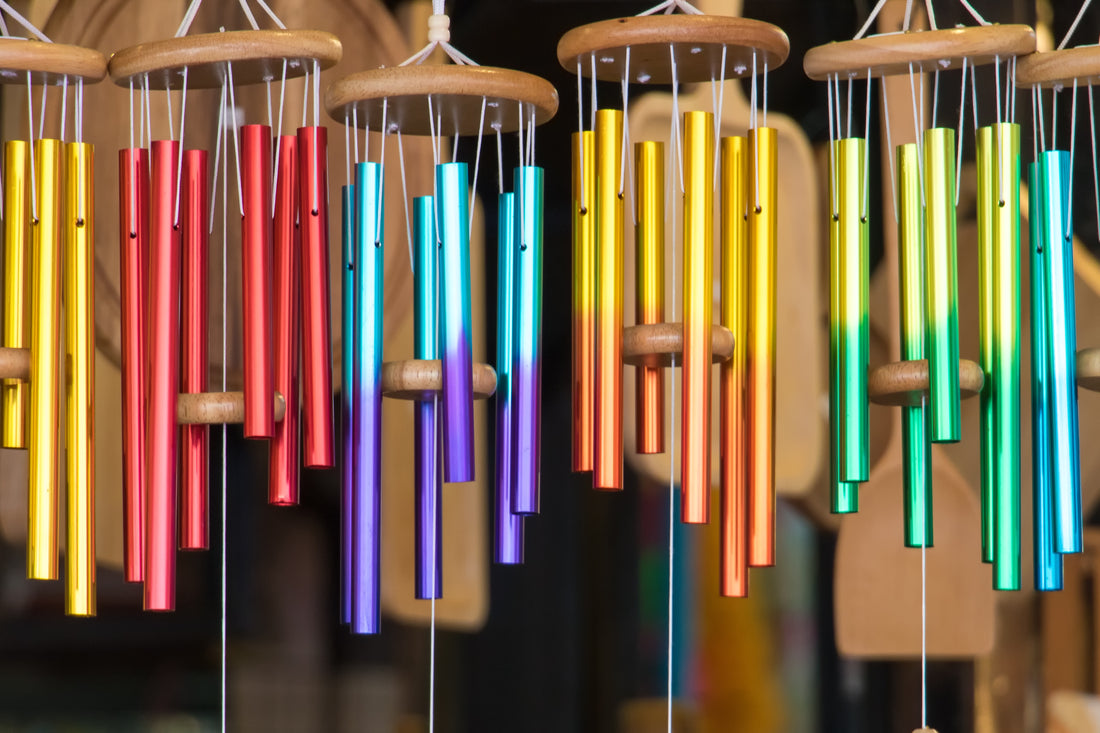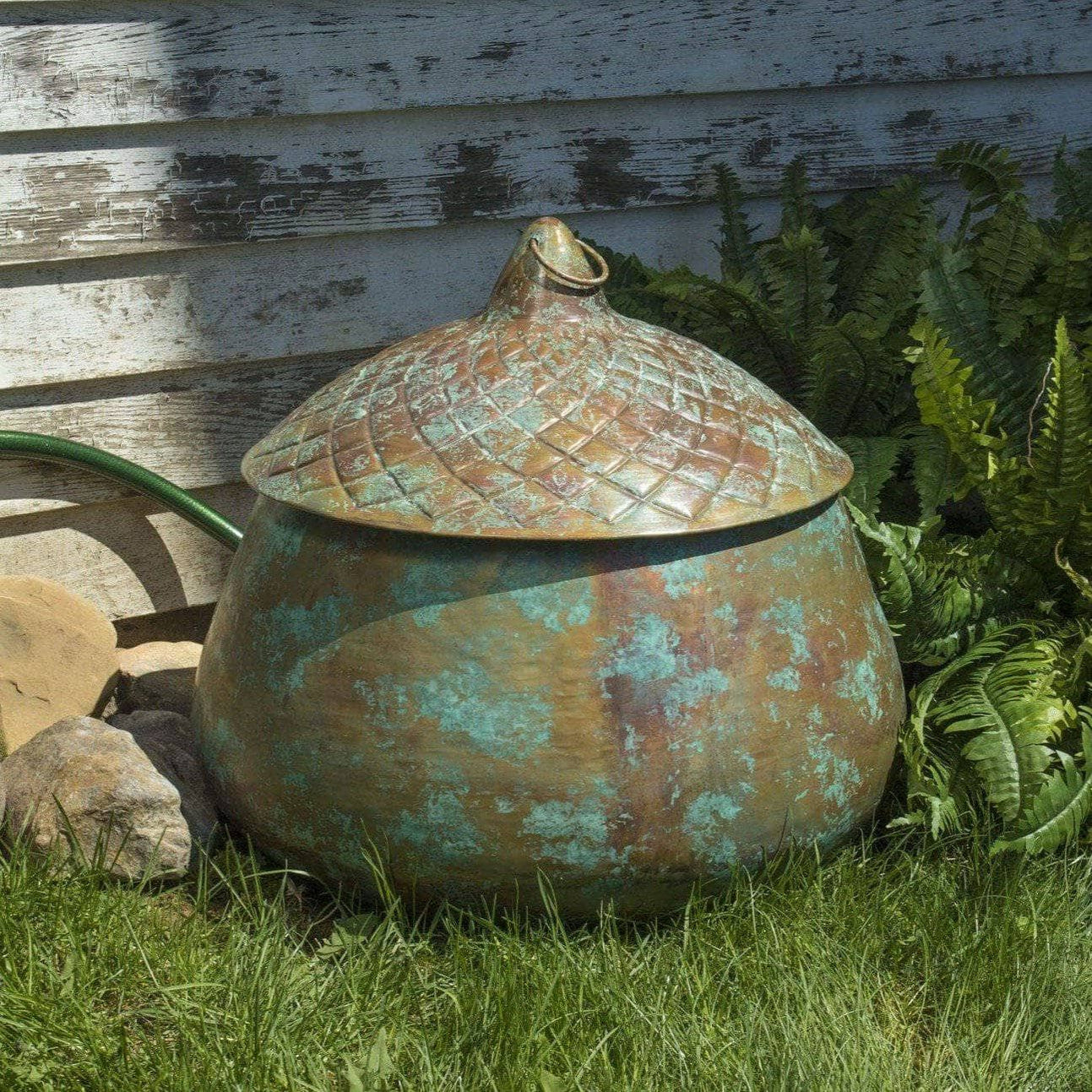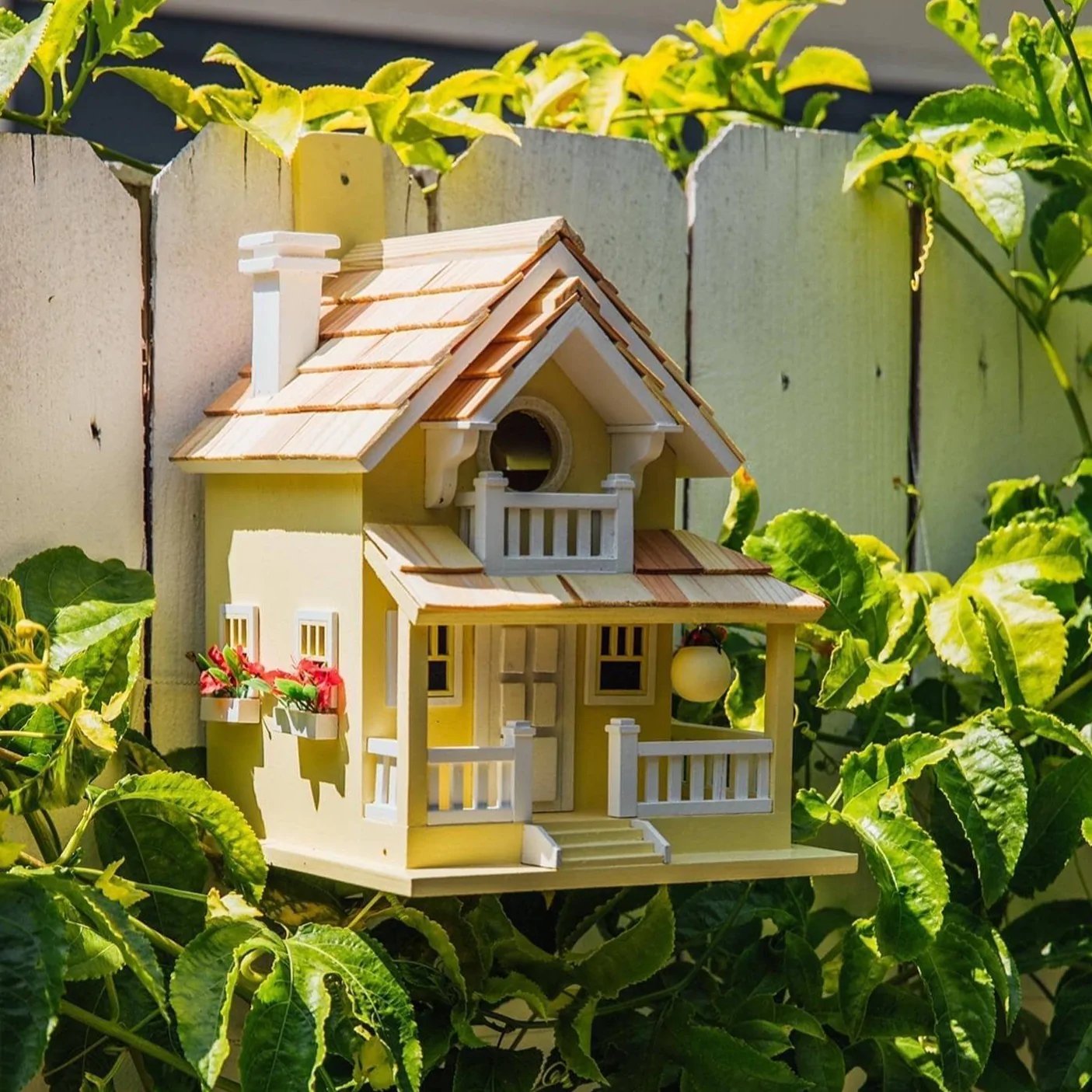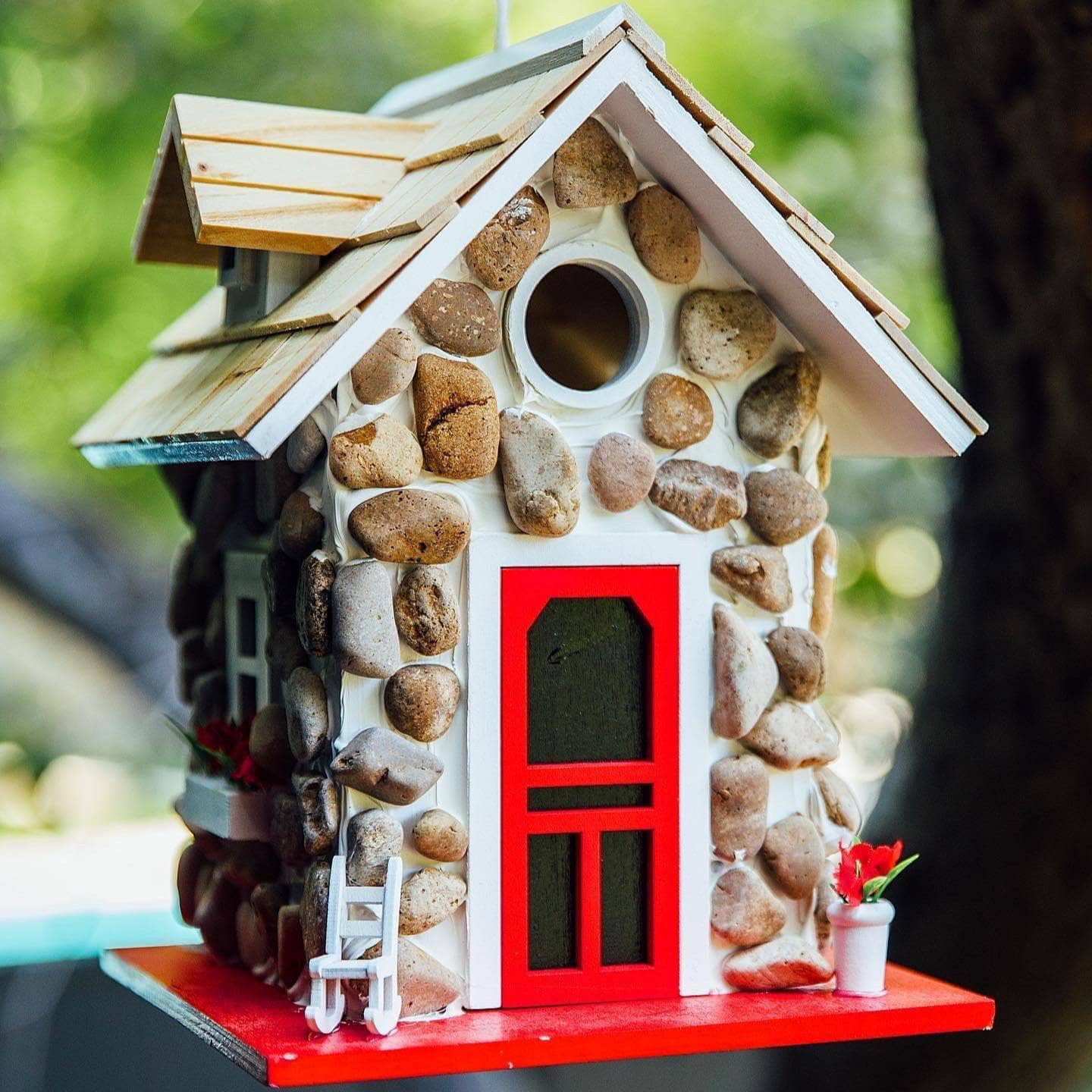
Making Wind Chimes Louder - Tips & Tricks
Share
If you're reading this article, chances are you have a wind chime (or several wind chimes) in your outdoor space. And maybe, no matter how hard the wind blows, you just don't feel your wind chimes are quite loud enough. Luckily for you, there are a variety of ways to make wind chime sounds louder.
In this how-to guide, we'll first touch on how wind chimes work. Once we're up to speed, we'll walk you through the many different ways you can make your wind chime sound loader, from choosing the right wind chime to changing how you hang and install the chimes.
Read on to learn more!
How Does a Wind Chime Work?
Before getting into the details of how to make a wind chime louder, let's dive into how wind chimes work. Here's what you need to know.
Most traditional wind chimes feature a clapper—a small, suspended piece of metal that's surrounded by longer tubes of bamboo, aluminum, or other materials. When a breeze passes through, this clapper makes contact with the pipes, creating that signature wind chime song.
Usually, wind chime designers cut each pipe to a different length, creating both visual variations and more complex, unique chiming. That's because both the length of the cylinders and the materials used affect the song-like reverberations.
Bamboo pipes, for example, lend themselves to softer music. Aluminum metal pipes, on the other hand, are louder.
You may have also guessed that wind speed also plays a role in how wind chimes work. In general, softer breezes yield softer music, whereas gusty conditions certainly amplify a wind chime's volume.
Related: Wind Chimes: Frequently Asked Questions
Making Wind Chimes Have Louder Sound
Just by learning about how wind chimes work, you've already uncovered two factors that affect wind chime volume: materials and wind conditions. Now, keep reading to learn more about these two variables and some other ways to make wind chimes louder.
Choosing the Right Materials
As previously mentioned, the materials used to craft your wind chime play a huge role in determining its maximum volume. Think of your wind chime as a tiny, little orchestra: the instruments selected to play really matter.
So if it's volume you're after, skip those wood clappers and bamboo wind chimes! Instead, search for well made wind chimes that feature materials like:
Loudest Wind Chime Materials
- Metal pipes (brass or copper hollow tubes)
- Aluminum sheet metal pipes
- Bike gears
- Silver spoons
- Cooking utensils
- Flowerpots
- Teapots
- Metal tools
- Driftwood
- Metal cans
Wondering why we've featured materials like flowerpots, teapots, and cooking utensils on this list? These "up-cycled" materials are perfect for making DIY Wind Chimes & Mobiles.
Purchasing Suspension Platforms
Looking for yet another way to pump up the volume on your favorite wind chime? You might want to consider buying a sturdier suspension platform.
What Does a Suspension Platform Do?
A suspension platform is exactly what it sounds like: a platform used to suspend a wind chime. These platforms can be wood, plastic, or metal. If you're making your own wind chime or attempting to "hack" a chime you already own, you'll want to ensure you are properly fastening the platform.
You'll want to plan ahead when creating your drill holes for the platform, and you'll want to ensure you evenly mark the platforms center. That's where your striker (or your clapper) will dangle, and if there's a misalignment in the strikers center, you may see a reduction in volume.
Fastening the Suspension Platform

Once it's time to thread the chimes through the suspension lines, you'll need to decide how long you want the chimes to hang. Remember, you can allow pipes to hang unevenly to create different sounds, but you still want to ensure they're hanging correctly.
As you thread through the sail, test out the chime from all different directions. Ensure the striker hits all the pipes during the installation process.
Cutting and Assembling the Chime
If you are crafting your own wind chime, you'll want to think some more about how you cut and assemble your piece. That's because, as you probably expected, there's a relationship between the size and width of your tubes and the pitch of the sounds they make.
Related: How to String a Wind Chime
Size and Sound
Narrow, short tubes create higher pitched tones. So if it's high-pitched music you seek, choose a wind chime with slender pipes or ensure to choose short, thin tubes for your DIY project. You can use a pipe cutter from any local hardware store to cut all the chimes to the desired length.
Testing the Sound Quality
Whether you buy a prefabricated wind chime or construct your own using salvaged home decor, you'll certainly want to test out your wind chime before installing it. Test our your wind chime in a mild breeze, then expose it to more wind.
If it doesn't sound right, you'll want to contract the manufacturer. And if it's a DIY wind chime, ensure your suspension lines are in good shape and inspect the entire chime.
Other Features to Consider
There are still a few more ways to increase the volume of your wind chimes. From choosing a large wind chime to changing where your chimes hang, there are lots of ways to experiment with wind chime volume.
Larger Wind Chimes Create Loud Sound
As you might have guessed, the larger the wind chime, the louder the sound it creates. So if it's volume you're chasing, choose oversize wind chimes. For an extra boost of volume, ensure those bigger-than-usual chimes are made from metal materials.
Where You Hang Wind Chimes Can Effect Sound
If you aren't happy with the sounds coming from your favorite wind chime, you might want to experiment with moving your wind chime to different locations.
You could hang your wind chime in a corner that receives extra wind, or move around other decor to create gustier conditions for your wind chimes.
Buying a Wind Chime
Now that you have a better idea of how wind chimes work and what you can do to make them louder, it's time to shop! You can buy a wind chime in lots of places, from a local hardware store to an antique shop. And if you'd rather get creative, you can always make one yourself, too.
Before you start searching for wind chimes, consider all the different factors that affect their volume. A few questions to ask yourself:
- How loud do I want my wind chime to be?
- What kind of ringing sound do I want?
- Do I want sharper tones, or softer ones? Or a more balanced sound?
- Do I want plastic or wooden strikers? Or a metal clapper?
- Will I be able to expose the chime to enough wind? Do I have the right windy area in my outdoor space for this particular chime?
- Am I interested in metal wind chimes or bamboo wind chimes, or something else?
- Am I willing to do some "work" on my wind chime to amplify sound? If so, what can be done to make it sound louder?
- Where is the wind chimes hanging point? Does where it hangs affect how much wind it gets?
Questions like these can help save you the hassle of having to shop for another wind chime later. They can also streamline your initial shopping trip and help you score the wind chime you really want on day one.
Local Second Hand Shops
If you're looking for unusual, vintage-inspired wind chimes, you might want to rummage through your favorite second-hand store. While you might strike out, you could also find something totally unique and amazing.
Swap meets, trunk shows, antique stores, and garage sales are also great places to search for a unique wind chime, too. Whatever you find might need a little TLC, so be prepared to recenter and restring your second-hand score.
Facebook Marketplace
Another great place to find a second-hand chime? Facebook Marketplace and other second-hand apps, like OfferUp. These sites can connect you with other locals who're looking to get some pretty awesome wind chimes off their hands.
While the selection might be limited, go ahed and set an alert for a "wind chime". You'll get notified whenever a new one hits the market—and one day, you just might find the perfect mobile.
Build Your Own DIY Wind Chime
Another option? Craft your own chime using materials like metal tubes, old housewares, hockey pucks, metal cans—anything, really. DIY wind chimes are a great way to get creative while designing decor that'll sound louder than what you might find prefabricated.
Happy Gardens Store
Looking for ready-to-install wind chimes that are unique, handcrafted, and downright charming? Look no further than our own Happy Gardens shop. Our carefully-curated collection of wind chimes offers something for everyone, whether you're looking for softer, smaller chimes or a bigger, louder one.
Our wind chimes feature all kinds of motifs, from butterflies and dragonflies to bells and balls to the sun, moon, and stars. No matter what you're looking for, our shop is sure to offer you a wind chime that's just right!
Plus, all our wind chimes are made from top-quality materials and are built to last. So whatever wind chime you choose, rest assured you'll be selecting something that'll bring charm and cheer to your outdoor space for years to come.
About Happy Gardens
Happy Gardens is a one-stop-shop for all things garden decor. Whatever you're searching for, you're sure to find unique, charming, and high-quality pieces in our online store. From rain chains to bird houses to wind chimes, Happy Gardens is the last place you'll ever need to look for remarkable outdoor decorations.
Want to be the first to know about new merchandise, big sales, and limited-time offers? Join our mailing list! And don't forget to follow us on Facebook and Instagram for your daily dose of garden inspiration.
So, how do you pick the perfect outdoor wall decor for your garden? Try asking one of the experts at Happy Gardens via chat. Here at Happy Gardens, we're always happy to help!










